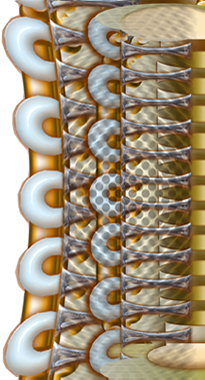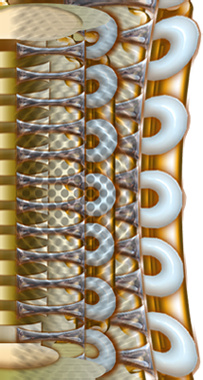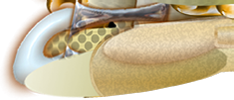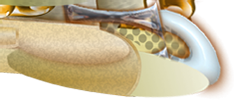| |
song info
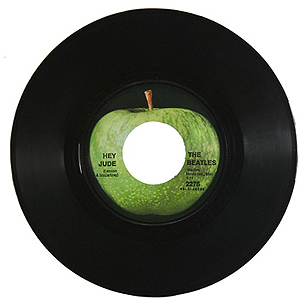
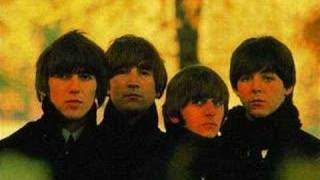 “Hey Jude” by The Beatles is a classic rock song.
Song Title: Hey Jude
Artist: the Beatles
Genre: pop, rock, classic rock
Composer: Copyright © 1968 McCartney-Lennon (written by Paul McCartney)
Lead Vocals: Paul McCartney
Backing Vocals: John Lennon, George Harrison, Ringo Starr
Electric Guitar: George Harrison
Acoustic Guitar: John Lennon
Piano: Paul McCartney
Bass Guitar: Paul McCartney
Drums: Ringo Starr
Tambourine: Ringo Starr
Uncredited – 10 violins, three violas, three cellos, two double basses, two flutes, two clarinets, one bass clarinet, one bassoon, one contrabassoon, four trumpets, two horns, four trombones, and one percussion instrument. EMI archives do not record the names of the studio musicians, but it has been established that one of the cellists was Bobby Kok and two of the flautists were Bill Jackman and Brian Warren.
Producer: George Martin
Recorded: 31 July-2 August 1968, Trident Studios, London
Released: 26 August 1968 (Apple)
Rolling Stone Top 500: Hey Jude was selected number 8 (eight) in Rolling Stone Magazine’s 500 Greatest Songs of All Time in May 2011. See Rolling Stone.
Number of listens: 36869
Current rank: 66 (updated weekly)
Highest rank: 51 (play the video all the way through to register a vote for this song)
  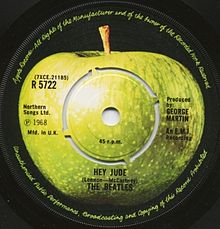
Summary quotation from Wikipedia:
“Hey Jude” is a song by the English rock band the Beatles, written by Paul McCartney and credited to Lennon–McCartney. The ballad evolved from “Hey Jules”, a song widely accepted as being written to comfort John Lennon’s son, Julian, during his parents’ divorce. “Hey Jude” begins with a verse-bridge structure based around McCartney’s vocal performance and piano accompaniment; further instrumentation is added as the song progresses to distinguish sections. After the fourth verse, the song shifts to a fade-out coda that lasts for more than four minutes.
“Hey Jude” was released in August 1968 as the first single from the Beatles’ record label Apple Records. More than seven minutes in length, “Hey Jude” was, at the time, the longest single ever to top the British charts. It also spent nine weeks as number one in the United States—the longest run at the top of the American charts for a Beatles’ single, and tied the record for longest stay at number one (until the record was broken by “You Light Up My Life”). The single has sold approximately eight million copies and is frequently included on professional lists of the all-time best songs.
Inspiration and writing
In 1968, John Lennon and his wife Cynthia Lennon separated due to John’s affair with Yoko Ono. Soon afterwards, Paul McCartney drove out to visit Cynthia and Lennon’s son, Julian. “We’d been very good friends for millions of years and I thought it was a bit much for them suddenly to be personae non gratae and out of my life,” McCartney said. Cynthia Lennon recalled, “I was truly surprised when, one afternoon, Paul arrived on his own. I was touched by his obvious concern for our welfare…. On the journey down he composed ‘Hey Jude’ in the car. I will never forget Paul’s gesture of care and concern in coming to see us.”
The song’s original title was “Hey Jules,” and it was intended to comfort Julian Lennon from the stress of his parents’ divorce. McCartney said, “I started with the idea ‘Hey Jules,’ which was Julian, don’t make it bad, take a sad song and make it better. Hey, try and deal with this terrible thing. I knew it was not going to be easy for him. I always feel sorry for kids in divorces … I had the idea [for the song] by the time I got there. I changed it to ‘Jude’ because I thought that sounded a bit better.” Julian Lennon discovered the song had been written for him almost twenty years later. He remembered being closer to McCartney than to his father: “Paul and I used to hang about quite a bit—more than Dad and I did. We had a great friendship going and there seems to be far more pictures of me and Paul playing together at that age than there are pictures of me and my dad.”
Although McCartney originally wrote the song for Julian Lennon, John Lennon thought it had actually been written for him:
But I always heard it as a song to me. If you think about it… Yoko’s just come into the picture. He’s saying. ‘Hey, Jude—Hey, John.’ I know I’m sounding like one of those fans who reads things into it, but you can hear it as a song to me … Subconsciously, he was saying, Go ahead, leave me. On a conscious level, he didn’t want me to go ahead.
Other people believed McCartney wrote the song about them, including Judith Simons, a journalist with the Daily Express. Still others, including John Lennon, have speculated that McCartney’s failing long-term relationship with Jane Asher when he wrote “Hey Jude” was an unconscious “message to himself.” In fact, when Lennon mentioned that he thought the song was about him, McCartney denied it, and told Lennon he had written the song about himself.
Writer Mark Hertsgaard noted “many of the song’s lyrics do seem directed more at a grown man on the verge of a powerful new love, especially the lines ‘you have found her now go and get her’ and ‘you’re waiting for someone to perform with.’” Tim Riley wrote, “If the song is about self-worth and self-consolation in the face of hardship, the vocal performance itself conveys much of the journey. He begins by singing to comfort someone else, finds himself weighing his own feelings in the process, and finally, in the repeated refrains that nurture his own approbation, he comes to believe in himself.”
McCartney changed the title to “Hey Jude” (a nickname for the male name Judas) because the name Jude was easier to sing. Much as he did with “Yesterday”, McCartney played the song for other musicians and friends. Ron Griffith of Badfinger (known at this time as the Iveys, and the first band to join the Beatles-owned record label Apple Records), recalled that on their first day in the studio, “Paul walked over to the grand piano and said, ‘Hey lads, have a listen’, and he sat down and gave us a full concert rendition of ‘Hey Jude’. We were gobsmacked.”
When McCartney introduced Lennon to his new composition, he came to “the movement you need is on your shoulder” and told Lennon “I’ll fix that bit.” Lennon asked why, and McCartney answered “…it’s a stupid expression; it sounds like a parent.” Lennon parried with “You won’t, you know. That’s the best line in the song.” McCartney thus left the line in, and later said “…when I play that song, that’s the line when I think of John, and sometimes I get a little emotional during that moment.”
Recording
The Beatles recorded 25 takes of “Hey Jude” at Abbey Road Studios in two nights, 29 and 30 July 1968. These were mostly rehearsals, however, as they planned to record the master track at Trident Studios to utilise their eight-track recording machine (Abbey Road was still limited to four-tracks). One take from 29 July is available on the Anthology 3 CD. The master rhythm track was recorded on 31 July at Trident. Four takes were recorded; take one was selected. The song was completed on 1 August with additional overdubs including a 36-piece orchestra for the song’s long coda, scored by George Martin. The orchestra consisted of ten violins, three violas, three cellos, two flutes, one contra bassoon, one bassoon, two clarinets, one contra bass clarinet, four trumpets, four trombones, two horns, percussion, and two string basses. While adding backing vocals, The Beatles asked the orchestra members if they would clap their hands and sing along to the refrain in the song’s coda. Most complied (for a double fee), but one declined, reportedly saying, “I’m not going to clap my hands and sing Paul McCartney’s bloody song!”
Ringo Starr almost missed his drum cue. He left for a toilet break—unnoticed by the other Beatles—and the band started recording. In 1994, McCartney said, “Ringo walked out to go to the toilet and I hadn’t noticed. The toilet was only a few yards from his drum booth, but he’d gone past my back and I still thought he was in his drum booth. I started what was the actual take, and ’Hey Jude’ goes on for hours before the drums come in and while I was doing it I suddenly felt Ringo tiptoeing past my back rather quickly, trying to get to his drums. And just as he got to his drums, boom boom boom, his timing was absolutely impeccable.”
At 2:58 of the song, someone can allegedly be heard to say, “Fucking hell!” There is some dispute as to who said this, and whether it was really exclaimed at all. Sound engineers Ken Scott and Geoff Emerick claim the exclamation came from McCartney, and that it was Lennon’s idea to leave the mistake in the final mix. “‘Paul hit a clunker on the piano and said a naughty word,’ Lennon gleefully crowed, ‘but I insisted we leave it in, buried just low enough so that it can barely be heard. Most people won’t ever spot it…but we’ll know it’s there.’” However, in the book Recording The Beatles, engineer Malcolm Toft recalls, “Barry Sheffield engineered ‘Hey Jude’, but I mixed it… John Lennon says a very rude word about halfway through the song. At 2:59 you will hear a ‘Whoa!’ from him in the background. About two seconds later you will hear, ‘Fucking hell!’ This was because when he was doing a vocal backing, Barry sent him the foldback level [headphone volume] too loud and he threw the cans on the ground and uttered the expletive. But, because it had been bounced down [mixed] with the main vocal, it could not be removed. I just managed to bring the fader down for a split second on the mix to try to lessen the effect.” Others argue that the voice is Ringo Starr’s.
George Harrison and McCartney had a disagreement over this song. According to McCartney, during a rehearsal Harrison played an answer to every line of the vocal. This did not fit with McCartney’s idea of the song’s arrangement, and he vetoed it. In a 1994 interview, McCartney said, “We were joking when we made the Anthology: I was saying: ‘I realise I was a bossy git.’ And George said, ‘Oh no, Paul, you never did anything like that!’ … But it was essential for me and looking back on it, I think, Okay. Well, it was bossy, but it was ballsy of me, because I could have bowed to the pressure.” Ron Richards, who worked for George Martin at both Parlophone at AIR Studios, and who discovered The Hollies, was present for many Beatles’ recording sessions. He said McCartney was “oblivious to anyone else’s feelings in the studio,” and that he was driven to make the best possible record, at almost any cost.
Composition and structure
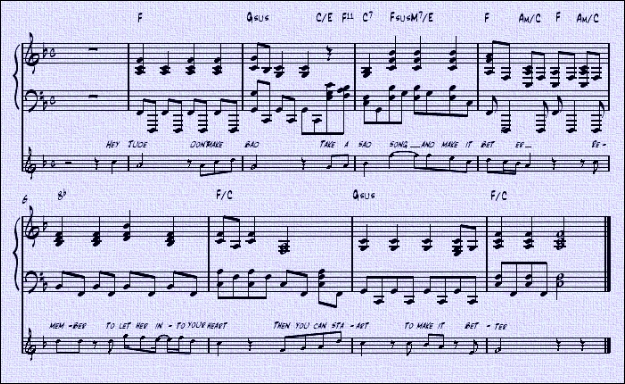
“Hey Jude” begins with McCartney singing lead vocals and playing the piano. The patterns McCartney plays are based on three chords: F, C and B-flat (I, V and IV); the second verse adds accompaniment by guitar and a single tambourine. The main chord progression is “flipped on its head” for the coda, as the C chord is replaced by E-flat. Author Tim Riley notes, “As Ringo offers a restrained tom-tom and cymbal fill, the piano shifts downward to add a flat seventh to the tonic chord, making the downbeat of the bridge the point of arrival (‘And any time you feel the pain’).” At the end of each bridge, McCartney sings a brief phrase (“Na-na-na na …”) and plays a piano fill which leads to the next verse; the phrase McCartney sings serves to “reorient the harmony for the verse as the piano figure turns upside down into a vocal aside.” Additional details, such as tambourine on the third verse and subtle harmonies that accompany the lead vocal, are added to sustain the interest of the listener throughout the four-verse, two-bridge song.
The verse-bridge structure of the song persists for approximately three minutes, after which the band leads into a four-minute-long coda. During the coda, the rest of band, backed by an orchestra that also provides backing vocals, repeat the phrase “Na-na-na na” followed by the words “Hey Jude” until the song gradually fades out. Time magazine described the coda as “a fadeout that engagingly spoofs the fadeout as a gimmick for ending pop records.” Riley notes the repeated chord progression of the coda (I-♭VII-IV-I) “answers all the musical questions raised at the beginnings and ends of bridges,” for “The flat seventh that pose dominant turns into bridges now has an entire chord built on it.” This three-chord refrain allows McCartney “a bedding […] to leap about on vocally”, as he ad-libs his vocal performance for the rest of the song. Riley concludes that the song “becomes a tour of Paul’s vocal range: from the graceful inviting tones of the opening verse, through the mounting excitement of the song itself, to the surging raves of the coda.”
Single release
“Hey Jude” was released on 26 August 1968, in the United States and 30 August in the United Kingdom, backed with “Revolution” on the B-side of a 7" single. The single was the debut release of the Beatles’ record label Apple Records; in the US, it was also the first Beatles’ single to be issued in a company sleeve rather than a picture sleeve. Even though “Hey Jude” was recorded during the sessions for the album The Beatles, also known as the White Album, it was always intended as a single and not an album track. Lennon wanted “Revolution” to be the A-side of the single, but the other Beatles did not agree. In his 1970 interview with Rolling Stone, he said “Hey Jude” was worthy of an A-side, “but we could have had both.” Ten years later in 1980, he told Playboy he still disagreed with the decision.
“Hey Jude” began its sixteen-week run on the British charts on 7 September 1968, claiming the top spot a week later. It only lasted two weeks on top before being knocked off by another single from Apple, Mary Hopkin’s “Those Were the Days” (a song which, incidentally, if not penned was actually produced by McCartney). The single was certified gold by the Recording Industry Association of America on 13 September; that same week NME reported that two million copies of the single had been sold. The song entered the US charts on 14 September 1968, where it stayed for nineteen weeks. Two weeks later, “Hey Jude” was number one in the charts, and held that position for nine weeks, the longest time spent by a Beatles’ single at number one, as well as being the longest-playing single to reach number one.
“Hey Jude” clocked in at 7:11. The only other chart-topping song worldwide in the 1960s that ran over seven minutes was Richard Harris’ “MacArthur Park”. In the UK, where “MacArthur Park” did not top the chart, “Hey Jude” remained the longest number-one hit for nearly a quarter of a century, until it was surpassed in 1993 by Meat Loaf’s “I’d Do Anything for Love (But I Won’t Do That)”, which ran 7:58 as a single.
On 30 November 1968 NME reported that sales had reached nearly six million copies worldwide. “Hey Jude” became the biggest-selling debut release for a record label ever, selling an estimated eight million copies worldwide and topping the charts in eleven countries. “Hey Jude” was the top Billboard Hot 100 single for 1968, according to year-end charts. Less than three weeks after its release, the record was certified gold for sales of one million copies. In 1999, it was certified 4x platinum, representing four million units shipped.
The Apple Boutique incident
A failed early promotional attempt for the single was later recalled by the Beatles’ personal assistant Alistair Taylor. On 7 August 1968, McCartney took his new girlfriend Francie Schwartz and Taylor to the Apple Boutique closed only a week before, in order to paint the upcoming single’s title Hey Jude/Revolution on its large street-side shop window. Within a day, the hand-made piece of promotion was mistaken for an anti-Semitic graffito (as Jude, beside being an English first name, happens to mean “Jew” in German), and the window was smashed by passers-by.
McCartney himself related the incident like this in 1996:
I went into the Apple shop just before Hey Jude was being released. The windows were whited-out, and I thought: “Great opportunity. Baker Street, millions of buses going around…” So, before anyone knew what it meant, I scraped Hey Jude out of the whitewash.
A guy who had a delicatessen in Marylebone rang me up, and he was furious: “I’m going to send one of my sons round to beat you up.” I said, “Hang on, hang on — what’s this about?” and he said: “You’ve written Jude in the shop window.” I had no idea it meant “Jew”, but if you look at footage of Nazi Germany, “Juden Raus” was written in whitewashed windows with a Star of David. I swear it never occurred to me.
I said: “I’m really sorry,” and on and on… “some of my best friends are Jewish, really. It’s just a song we’ve got coming out. If you listen to the song you’ll see it’s nothing to do with any of that – it’s a complete coincidence.” He was just about pacified in the end.
— Paul McCartney, The Beatles Anthology
Promotional film
The Beatles hired Michael Lindsay-Hogg to shoot the “Hey Jude” promotional film (he had previously directed a ‘promo’ film for “Paperback Writer”) and they settled on the idea of filming with a live, albeit controlled audience. In the film, the four Beatles are first seen by themselves, performing the initial chorus and verses, and then are joined by the audience who appear as the last chorus concludes and coda begins; the audience sings and claps along with the Beatles through the song’s conclusion. Hogg shot the film at Twickenham Film Studios on 4 September 1968, with McCartney himself designing the set. Tony Bramwell, a friend of the Beatles, later described the set as “the piano, there; drums, there; and orchestra in two tiers at the back.” The event is also memorable as it marked Starr’s return to the group after a two-week hiatus, during which he had announced that he had left the band. The eventual, final film was a combination of several different takes and included filmed ‘introductions’ to the song by David Frost (who introduced the Beatles as “the greatest tea-room orchestra in the world”) and Cliff Richard, for their respective, eponymous TV programmes. As filming wore on, Lennon repeatedly asked Lindsay-Hogg if he had the footage he needed. After twelve takes, McCartney said, “I think that’s enough” and filming concluded. It was first aired in the UK on 8 September 1968 and the film was later broadcast for the United States on The Smothers Brothers Comedy Hour on 6 October 1968. Footage of the performance can be seen in the Anthology DVD series. Two versions of the film exist.
During the coda/fadeout of the song, McCartney adds a lyric that is not in the original recording: “Take a load off Fanny/ Take a load off Fanny/ Put it back on me.” This is obviously from the song “The Weight” by The Band which had been released earlier that year on their debut album Music From Big Pink. For McCartney to quote a song lyric so newly released shows the high regard and esteem he held for the Canadian/American group, which had previously backed up Ronnie Hawkins and Bob Dylan.
—from Wikipedia (the Wikipedia:Text of Creative Commons Attribution-ShareAlike 3.0 Unported License applies to Wikipedia’s block of text and possible accompanying picture, along with any alterations, transformations, and/or building upon Wikipedia’s original text that ThisSideofSanity.com applied to this block of text)
|
|



